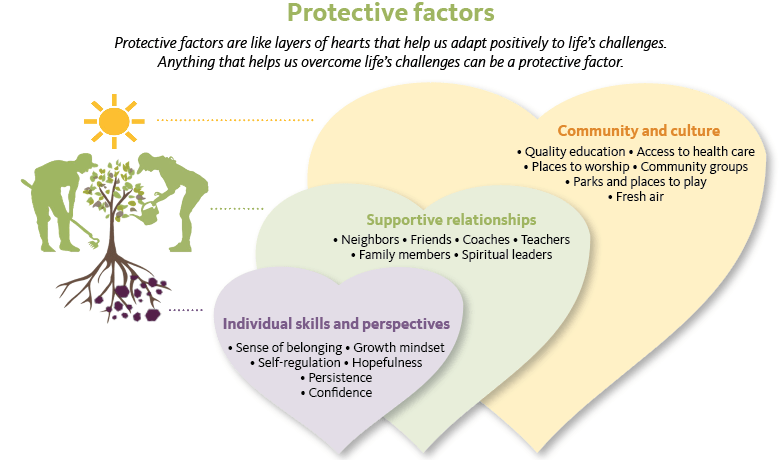Resilience is adapting positively to life’s challenges. Resilience is for everyone. We nurture resilience by caring for ourselves and each other.
What we know
Protective factors in our culture and community (shown by the sun in the illustration below) nurture resilience by supporting the caregivers and the child.
Supportive relationships are protective factors (shown by the gardeners) that nurture children’s roots of resilience.
Children (shown by the tree) have many individual protective factors. They do not need strength in all areas to be resilient. Supportive relationships and community and culture help children gain these individual skills.
What can we do?
Notice and encourage children’s protective factors. Share family and community traditions, build relationships, and call out their successes. “Wow — I see how hard you worked on that drawing!”
Prioritize your protective factors, too! Choose one person to reach out to this week. Invite them for a walk, talk or to share food. Write them a thank you note or connect in another way.
For more information on trauma-informed care for children, visit Roots of Resilience.



